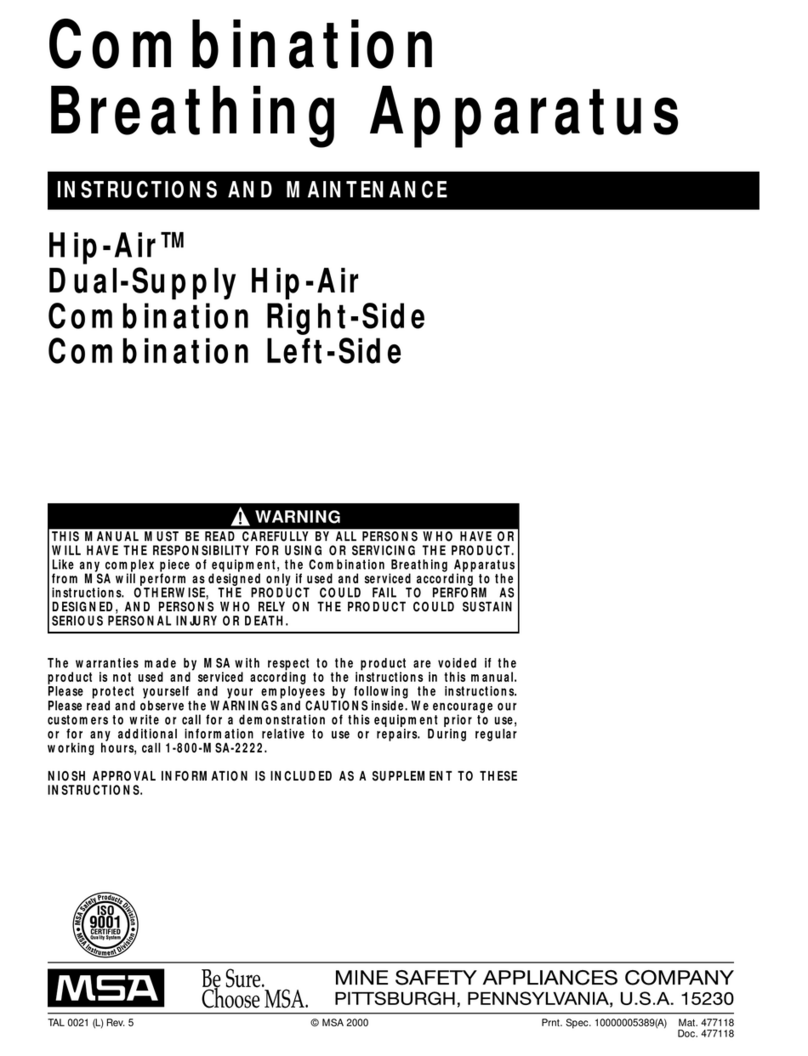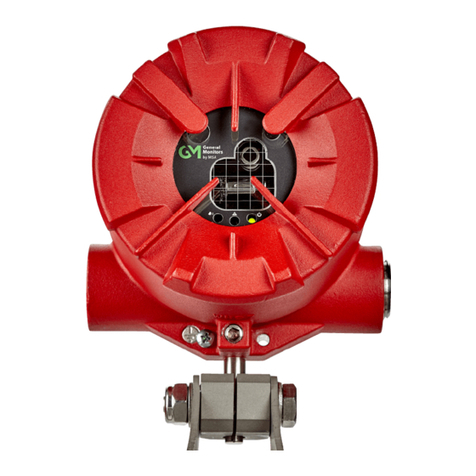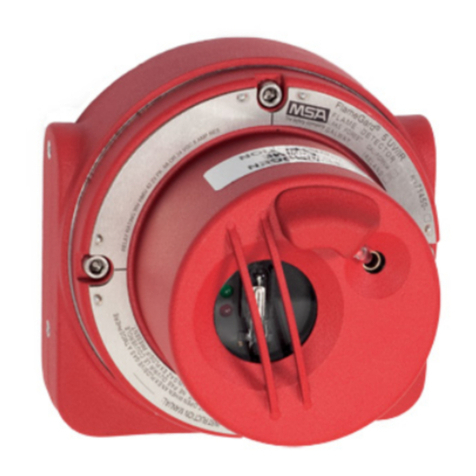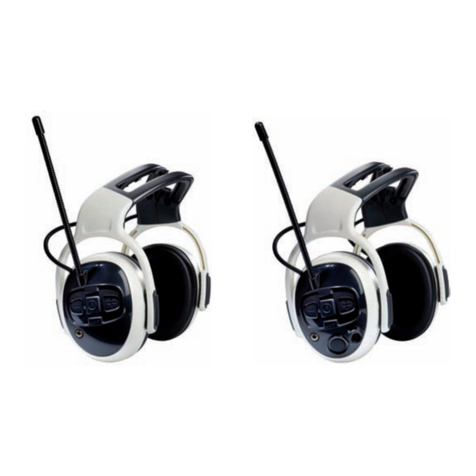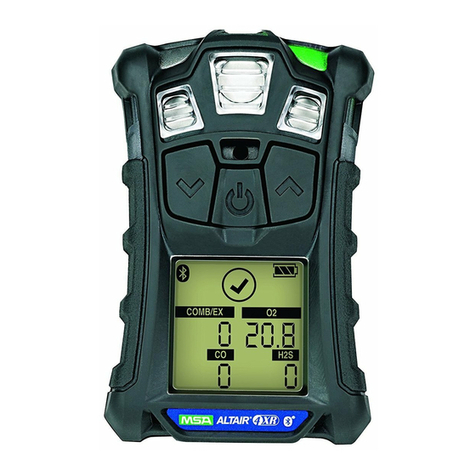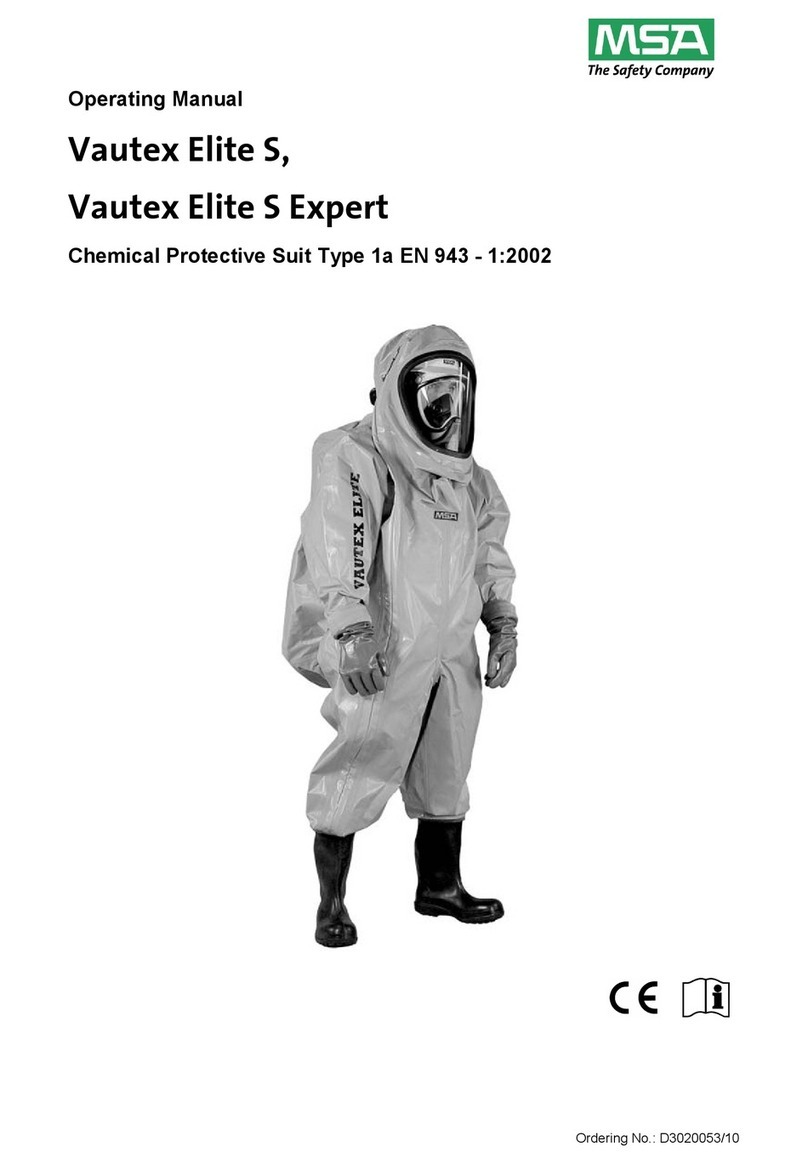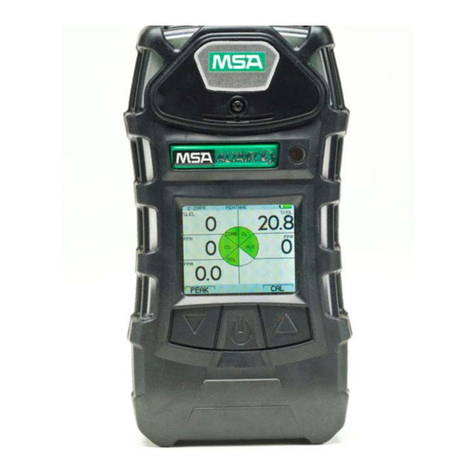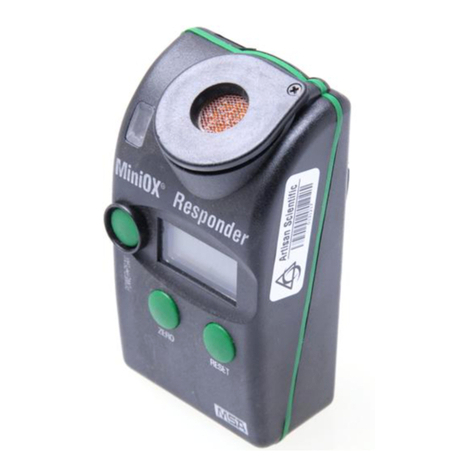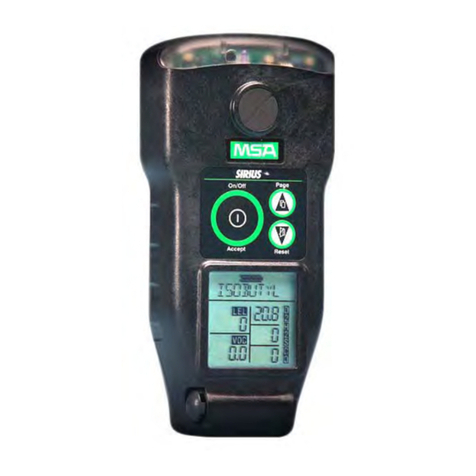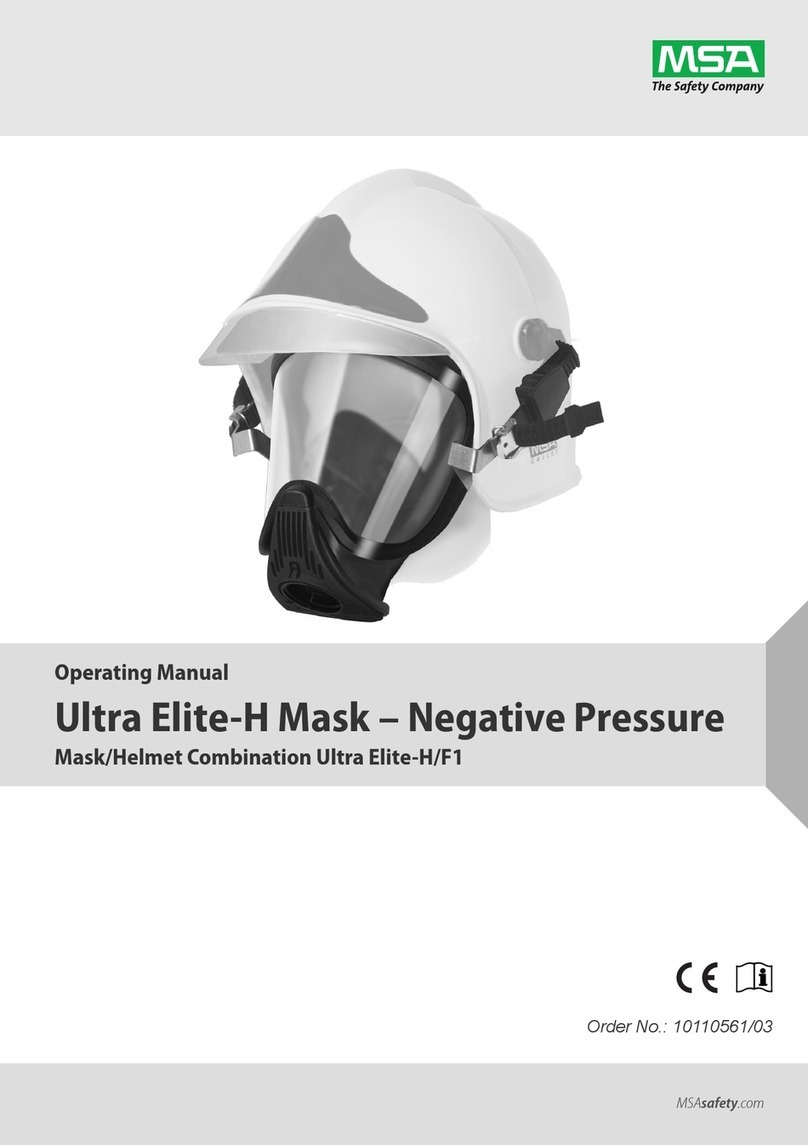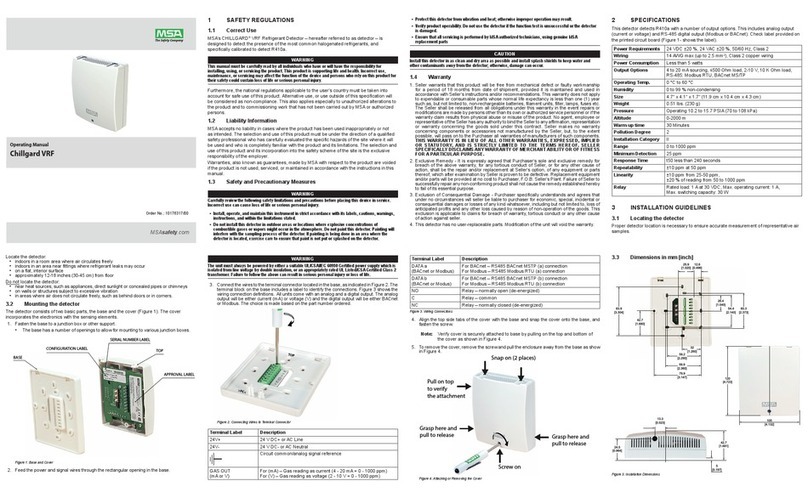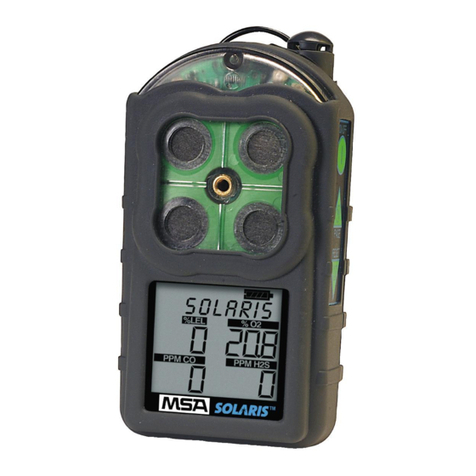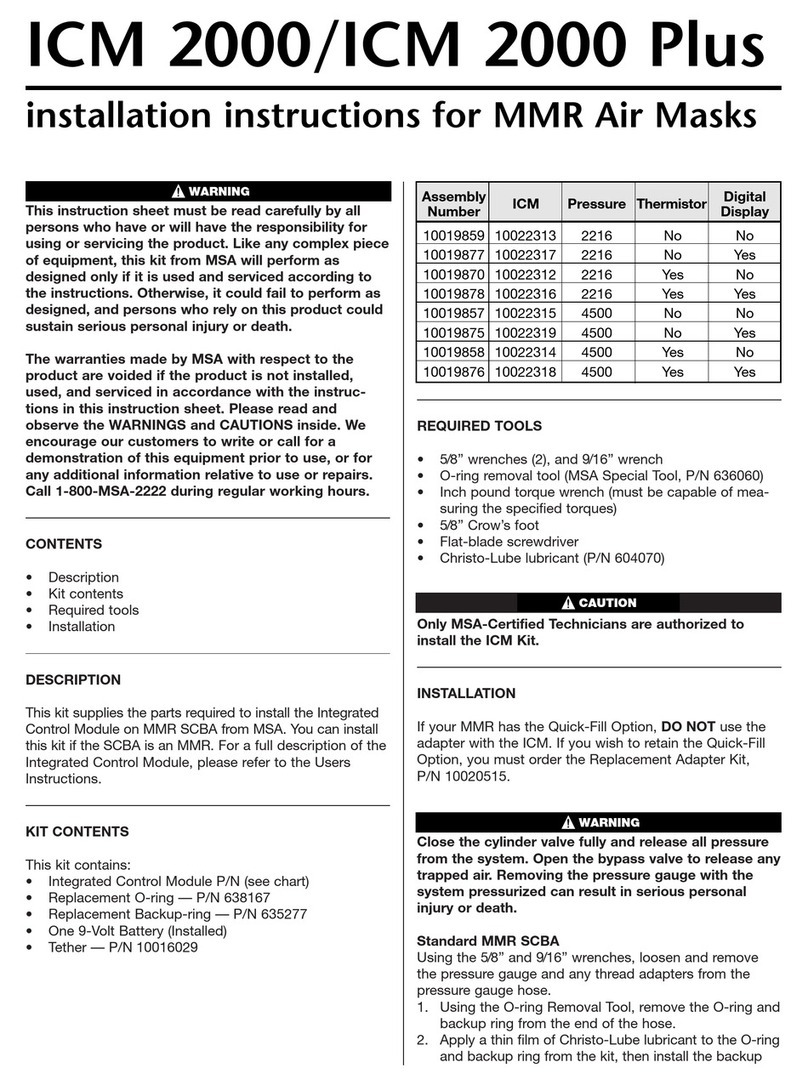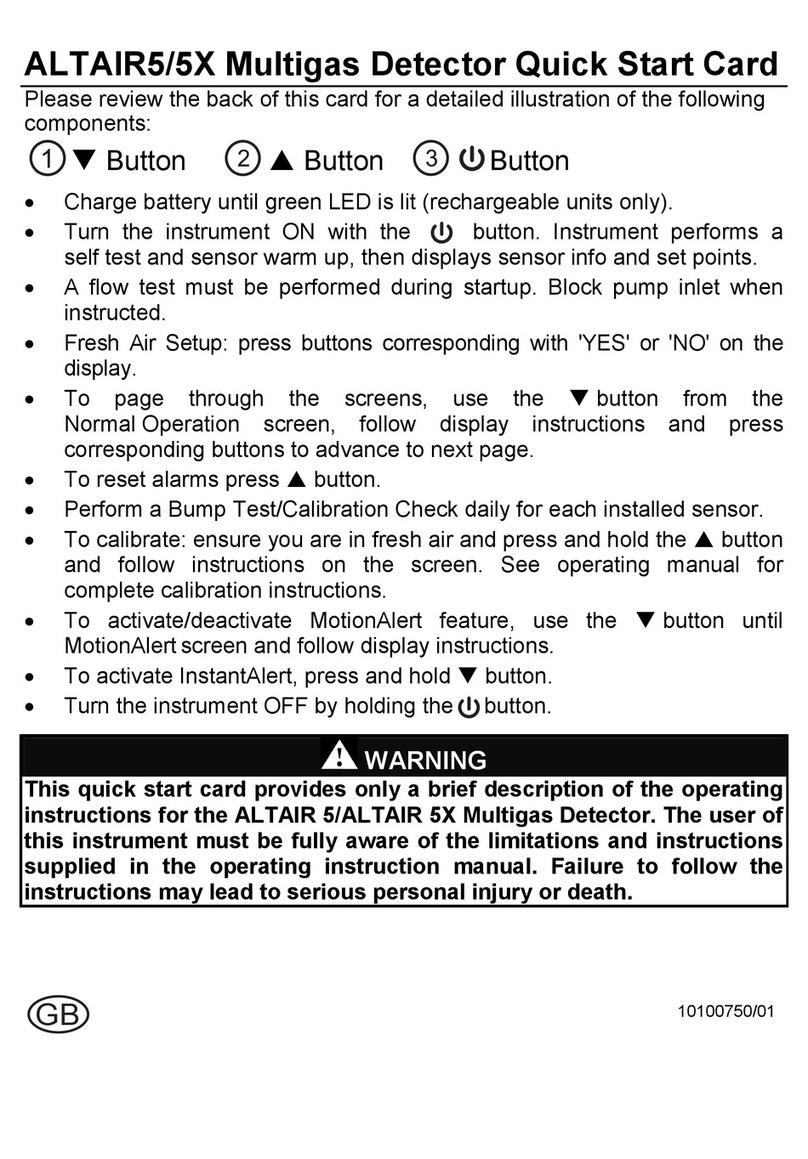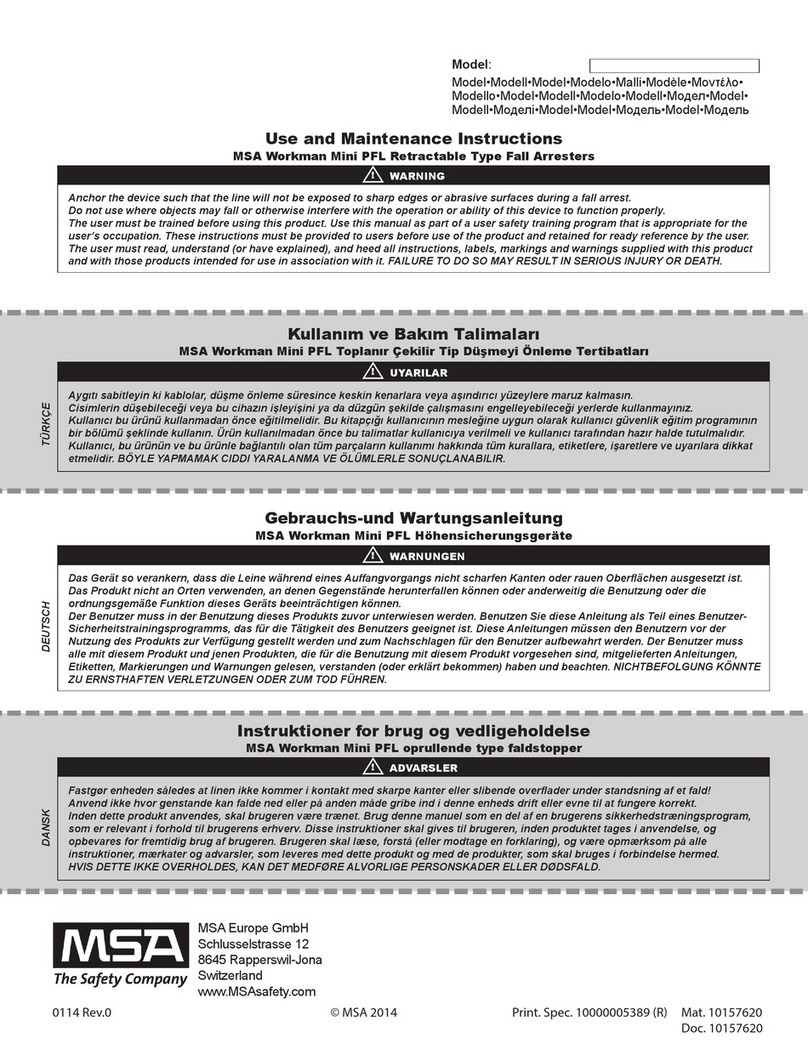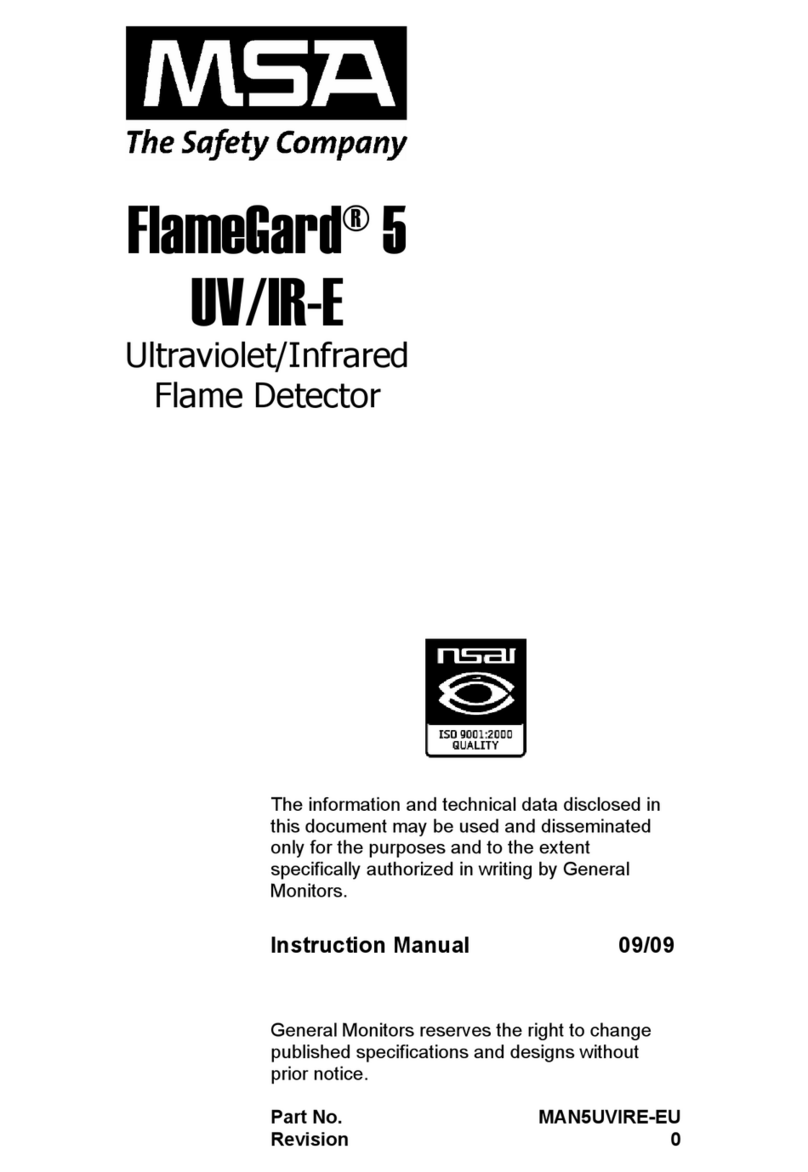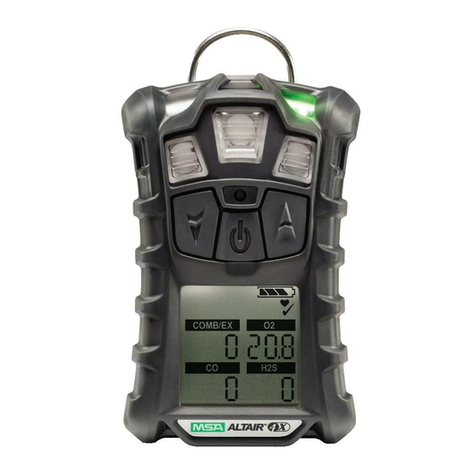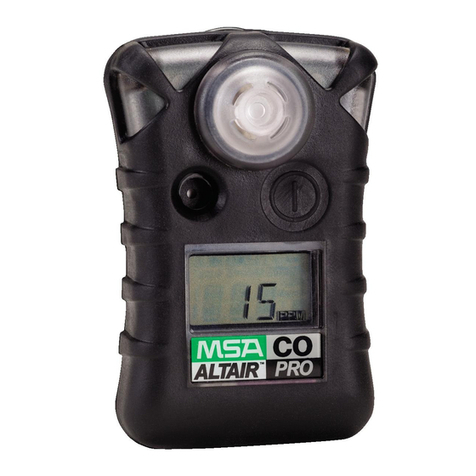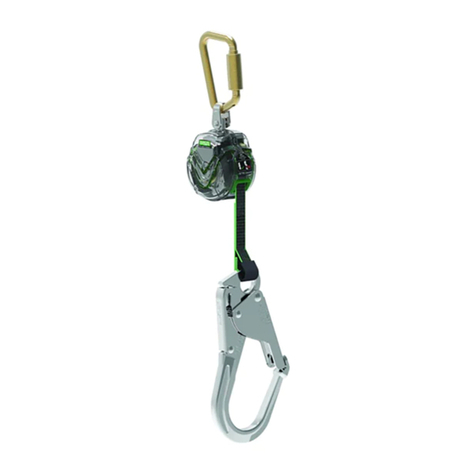
INSTRUCTIONS FOR USE AND CARE
1. An a equate respiratory protection program must
inclu e knowle ge of hazar s, hazar assessment,
selection of proper respiratory protective equip-
ment, instruction an training in the use of equip-
ment, inspection an maintenance of equipment,
an me ical surveillance.
2. This respirator will perform as esigne only if
use an maintaine accor ing to the manufactur-
er's instructions. The Program A ministrator an
the users must rea an un erstan these instruc-
tions before using or servicing this pro uct.
3. If the respirator oes not perform as specifie in
this manual, it must not be use until it has been
checke by authorize personnel.
4. Do not alter, mo ify, or substitute any components.
5. Inspect the respirator regularly an maintain it
accor ing to the instructions. Repairs must only be
ma e by properly traine personnel.
6. This respiratory protective evice oes not supply
oxygen. Use only in a equately ventilate areas
which conform to the appropriate stan ar .
7. This respirator must be use in conjunction with
the proper chemical or particulate canis-
ter/cartri ge(s) for protection against specific con-
taminants. If you cannot etermine that the filter
canister/ cartri ge(s) use with this evice is
esigne for the contaminant, or if you o not
know the i entity of the contaminant, o not use
this evice.
8. Do not use when concentrations of contaminants
are unknown.
9. Do not use when appropriate exposure limit (PEL,
REL, TLV, etc.) is not known.
10. Leave the contaminate area imme iately if:
a. Breathing becomes ifficult
b. Dizziness or other istress occurs
c. You taste or smell the contaminant
. You experience nose or throat irritation
e. Instructe by responsible in ivi uals
11. Use strictly accor ing to the instructions, labels,
an limitations pertaining to this evice. Follow an
establishe canister/cartri ge(s) change-out
sche ule.
12. This respirator may not provi e a satisfactory seal
with certain facial characteristics, such as bear s
or large si eburns, that prevents irect contact
between the skin an the sealing surface of the
facepiece. Do not use this facepiece if such con i-
tions exist.
13. Do not wear eyeglasses un er the facepiece. The
temples or si ebars on eyeglasses will prevent an
air-tight seal. If you must wear glasses, install the
spectacle kit.
14. The user must perform a respirator fit test
(Quantitative Test or Qualitative Test) an follow all
warnings an limitations specifie .
15. Wear impermeable protective clothing to prevent
exposure to gases an vapors which can poison by
skin absorption.
16. Do not use this full facepiece with self-containe
breathing apparatus (SCBA) unless equippe with
a push-to-connect inlet.
17. Do not use this respiratory protective evice in
explosive atmospheres.
18. Do not use for urethane paints or other paints con-
taining isocyanates unless an appropriate cartri ge
change-out sche ule is evelope . Due to their
poor warning properties, overexposure can occur
without user awareness an result in severe per-
manent amage to the respiratory system. If
unable to evelop an appropriate change-out
sche ule, use an air-supplie respirator or SCBA.
Failure to follow all warnings, instructions, an estab-
lishe protective measures can result in serious per-
sonal injury or eath.
• This respirator/filter provi es LIMITED protection.
It may help re uce exposure to airborne biological
agents, inclu ing H1N1 (swine) flu virus, avian
(bir ) flu virus, other types of influenza, SARS, or
other bacterial or viral biological agents an help
re uce the risk for influenza infection uring a pan-
emic, but will NOT eliminate the risk of exposure,
infection, illness, or eath.
• This respirator/filter is certifie by NIOSH to com-
ply with the requirements specifie for the esig-
nate filter efficiency level; however, appropriate
authorities have NOT establishe a safe level of
exposure to biological agents. Therefore, the respi-
rator may NOT prevent transmission of influenza
virus.
• Refer to the Centers for Disease Control an
Prevention (CDC) at www.c c.gov for gui ance on
the use of respirators to help ecrease exposure to
H1N1 virus or other airborne biological agents in
community, home, an occupational settings. The
CDC recommen s fit testing, me ical evaluations,
an training for optimal effectiveness when a res-
pirator is use in a non-occupational setting.
Neglecting these preparatory measures may cause
an unsafe con ition. Respirators use in an occu-
pational setting MUST be use in accor ance with
a complete respiratory protection program as
require by OSHA, which inclu es proper selec-
tion, training, fit-testing, an fit-checking. Detaile
information on a respiratory protection program is
available by contacting OSHA or visiting
www.osha.gov.
• Do NOT remove respirator in contaminate areas.
The outer surface of the respirator MUST be treat-
e as if it is contaminate at all times. Tight-fitting
3TAL 018 (L) Rev. 6 - 10073772
